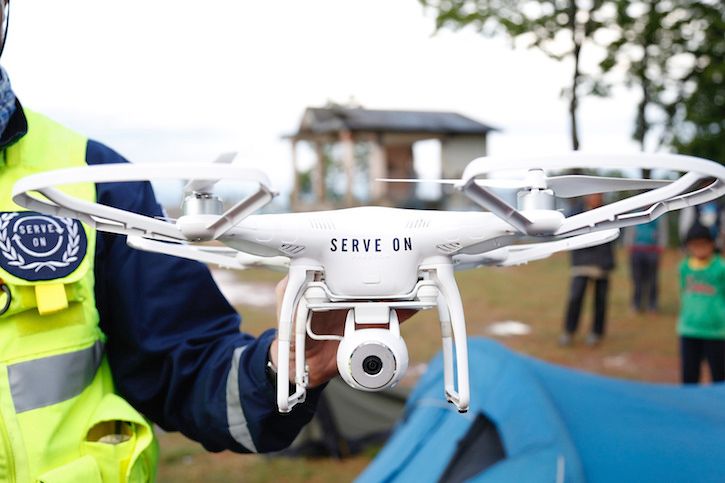Telemedical Drones Are Increasing Access to Care in the Face of Natural Disasters
“It is just a matter of time before the drones become part of routine life.”

Natural disasters hit health systems hard. They simultaneously increase demand for medical services and freeze health systems’ ability to reach patients in need.
The American Osteopathic Association (AOA) is looking to bridge the gap in care caused by natural disasters with telemedical drone systems—a solution they say can’t be dismantled by power outages, flooded streets, or bottlenecked highways.
“Recent catastrophic events illustrate the challenges of getting life-saving treatment to disaster victims, particularly when first responders can’t get there quickly by ground,” said Italo Subbarao, DO, senior associate dean at William Carey University College of Osteopathic Medicine. “Our goal, as osteopathic physicians, is to bridge that delay by delivering rapid treatment directly to the victims, using remote physicians to instruct anyone on site.”
Subbarao and colleagues at AOA unveiled the Telemedical Drone Project, known as HiRO (Health Integrated Rescue Operations) Oct. 9 at OMED 17 in Philadelphia. The latest version of the HiRO drone is undergoing testing to support the Mississippi Department of Emergency Management, Homeland Security, the National Guard, and NATO, physicians said.
Subbarao and colleagues developed the drones after studying the medical response to an EF-4 tornado that struck Mississippi in February 2013. Damage was so extensive that ambulances couldn’t reach all the homes that had been affected.
Following years of research and testing, HiRO drones are expected to be production-ready by early 2018, according to an AOA statement. The program is poised to usher in 3 key advancements in drone technology:
- An automated medication bin that allows remote physicians to unlock specific compartments within the drone, allowing bystanders to safely access medications and equipment.
- An augmented reality interface that operates on a Microsoft HoloLens headset, giving remote physicians the ability to treat multiple victims.
- An integrated holographic electronic health record system display, helping the remote physician to monitor multiple patients in the field.
“We focused on making sure our interface and medical kits are intuitive for both the remote physician and the person at the scene. Safety and simplicity are top priorities because we’re working to save lives in very high stress situations,” said Guy Paul Cooper Jr, DO, one of HiRO’s primary developers. “The HiRO telemedical drone provides immediate access to a physician through a wireless video connection. When the portable care kit arrives, the doctor appears on a touchscreen display to direct medical treatment.”
The care kit includes smart glasses, which allow a person at the scene to move elsewhere while maintaining audio and visual contact with the remote physician behind the drone. Through holographic technology, the physician can see the disaster scene and direct care through a hands-free, motion-enabled augmented reality headset.
The drone is currently being field-tested. Dennis Lott, director of the unmanned aerial vehicle program at Hinds Community College in Mississippi, said that while the project was inspired by disasters in the US, it has much broader implications for increasing medical access to remote and disaster-affected areas worldwide.
“These drones have impressive lift and distance capability, and can be outfitted with a variety of sensors, such as infrared, to help locate victims,” Lott said. “It is just a matter of time before the drones become part of routine life.”
Podcast: Adoption of Healthcare Tech in the Age of COVID-19 with Dr Kaveh Safavi
June 22nd 2021Kaveh Safavi, MD, JD, global health lead of Accenture Health, discusses how the pandemic influenced the speed at which healthcare organizations adopted new technologies and how this adoption is impacting patient care.